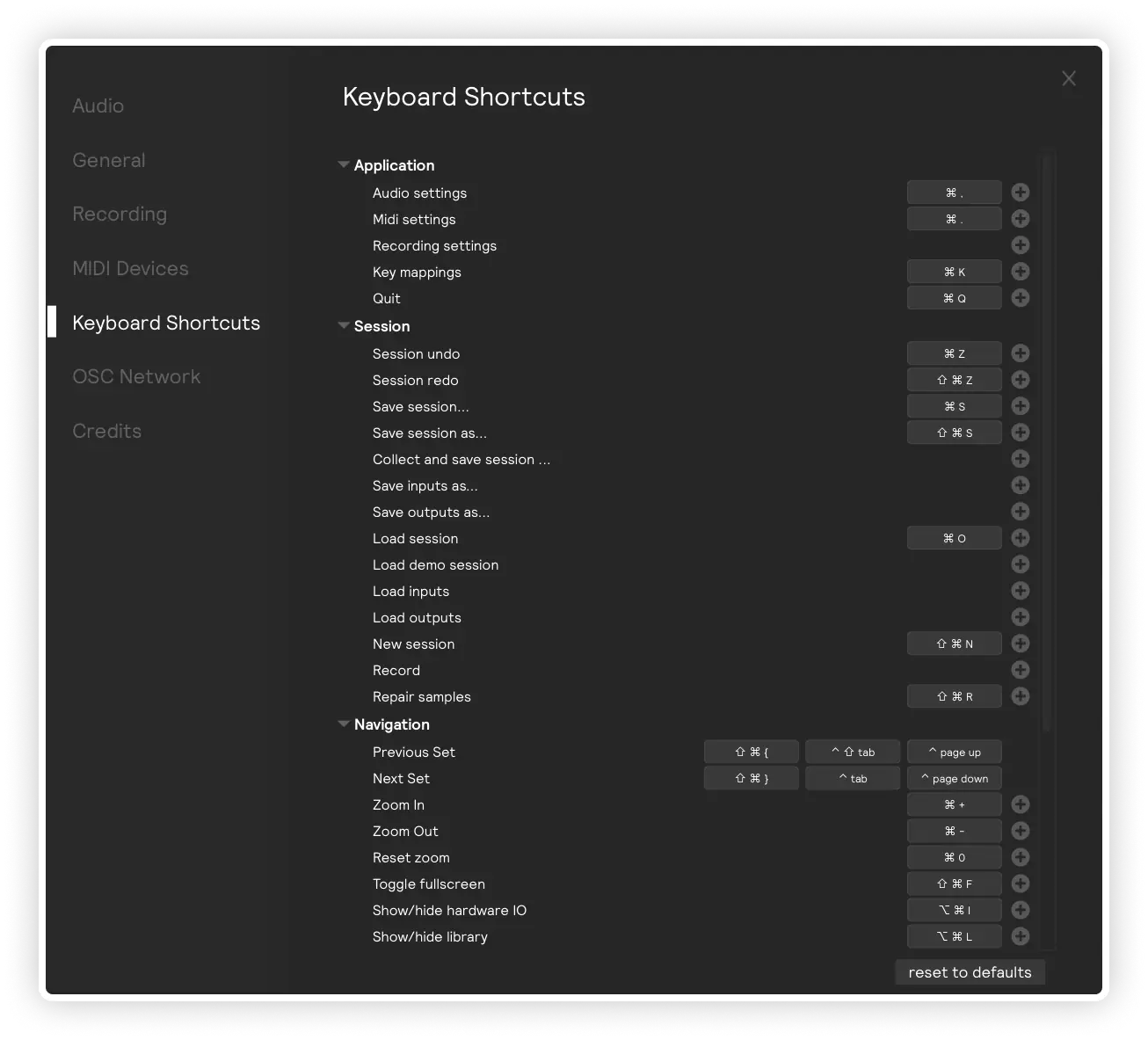Settings Window
The settings window is where you can configure various aspects of your audio interface, MIDI connections, and other application-level parameters. You can reach this page by clicking the gear icon on the bottom right of the app or by selecting which settings window you'd like to open from the Sensory Percussion menu on Mac or File on Windows.
There are also some keyboard shortcuts you can use::
- Audio settings: ⌘/ctrl + ,
- MIDI devices: ⌘/ctrl + .
- Keyboard shortcuts: ⌘/ctrl + K
Audio Settings
The Audio Settings page is where you can configure various parameters of your audio interface. If you're using the EVANS Portal, you will see a custom audio settings page with an image of the Portal and the ability to choose Recommended or Custom settings. Sensory Percussion has recommended settings for active channels, sample rate, and buffer size. Although the recommended buffer size is 128 samples, if your machine is fast enough, lowering it to 64 samples will improve performance.
The input and output VU meters are visual indicators of your signal levels. Clicking the play button to the left of the output meter will play a test tone.
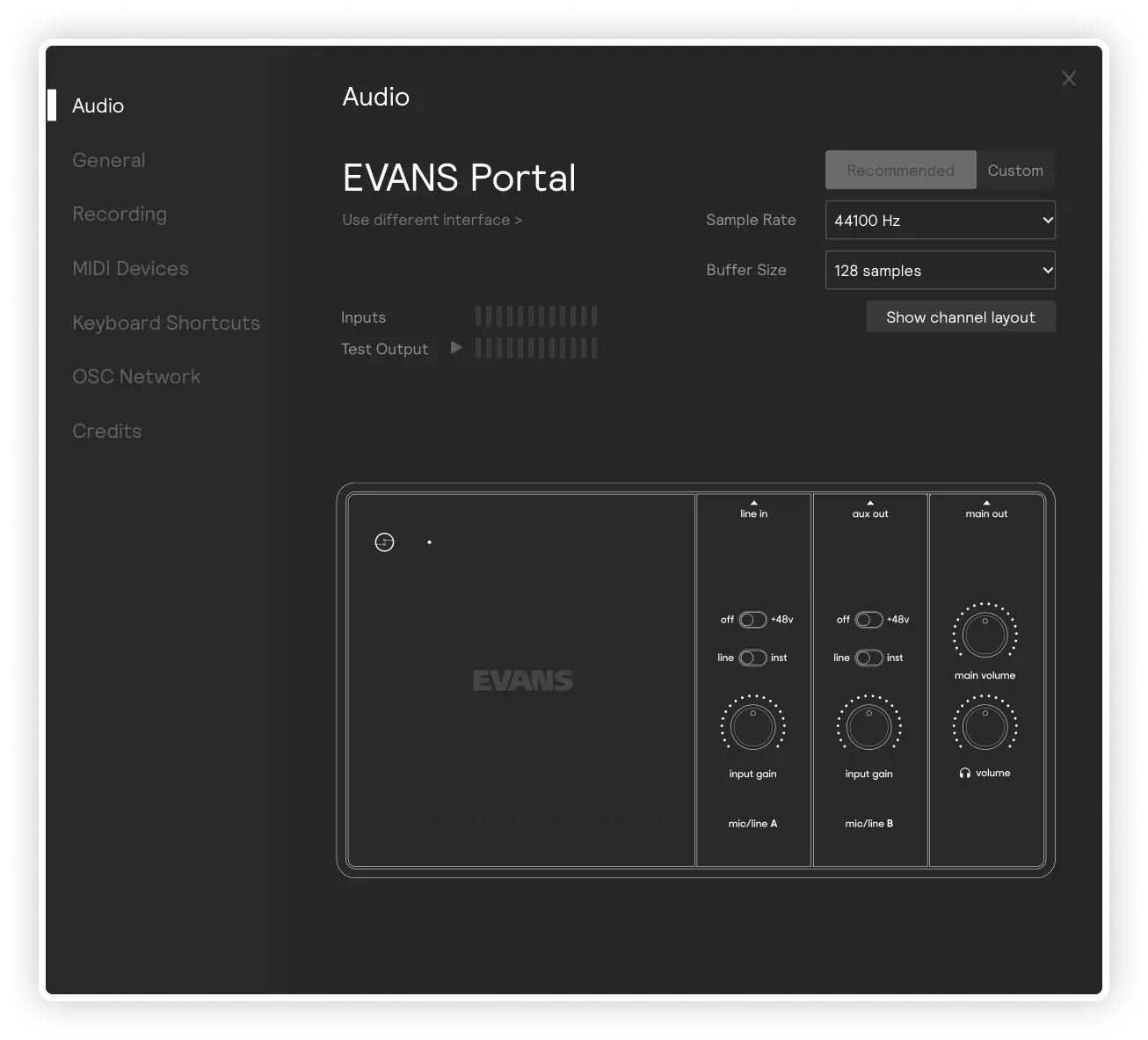
Clicking the Show channel layout button will show you the 12 input and 16 output channels of the Portal, allowing you to activate/deactivate however you'd like:
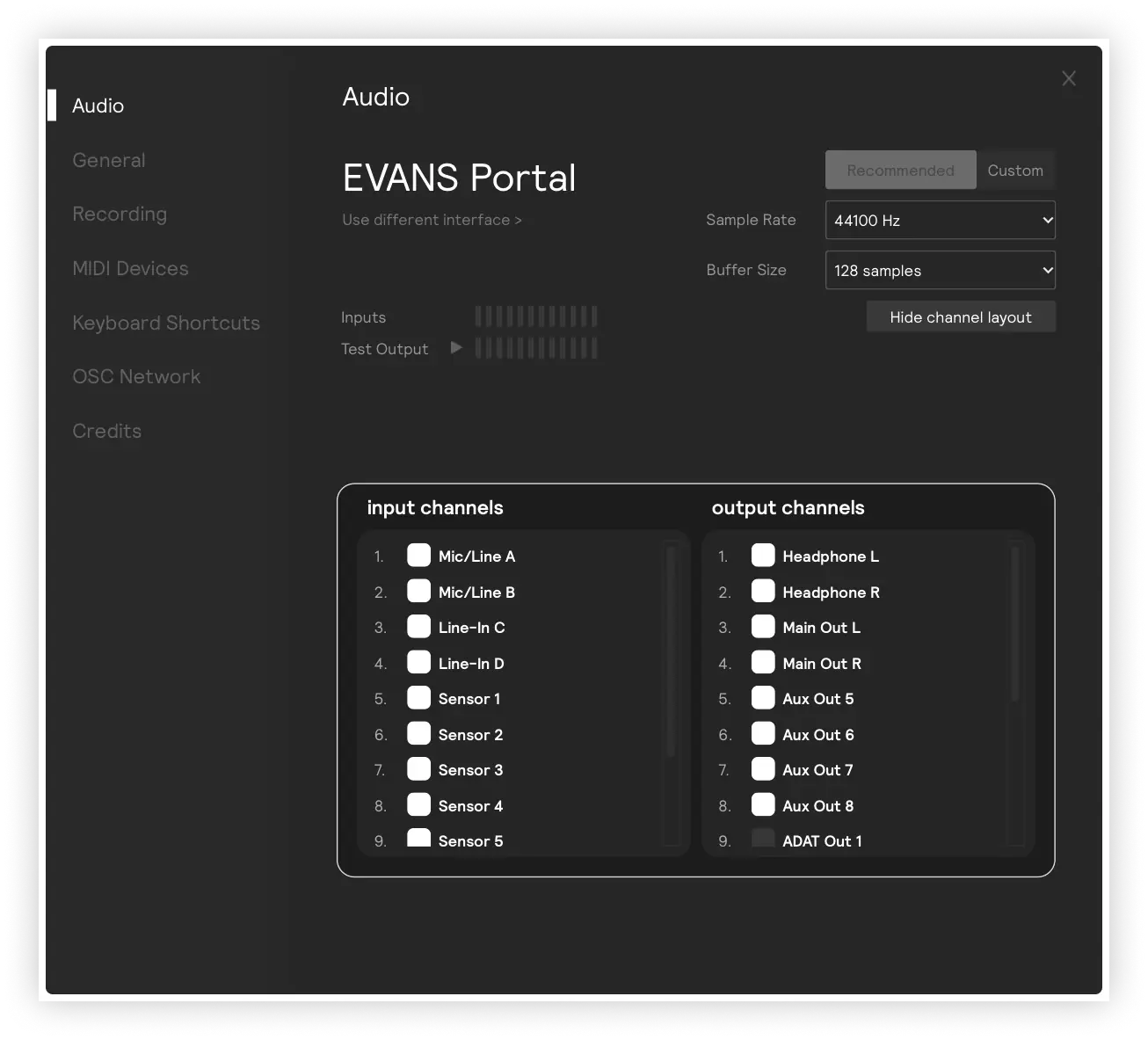
If you're using any audio interface other than the EVANS Portal, your audio settings page will look like this, with the channel layout open by default:
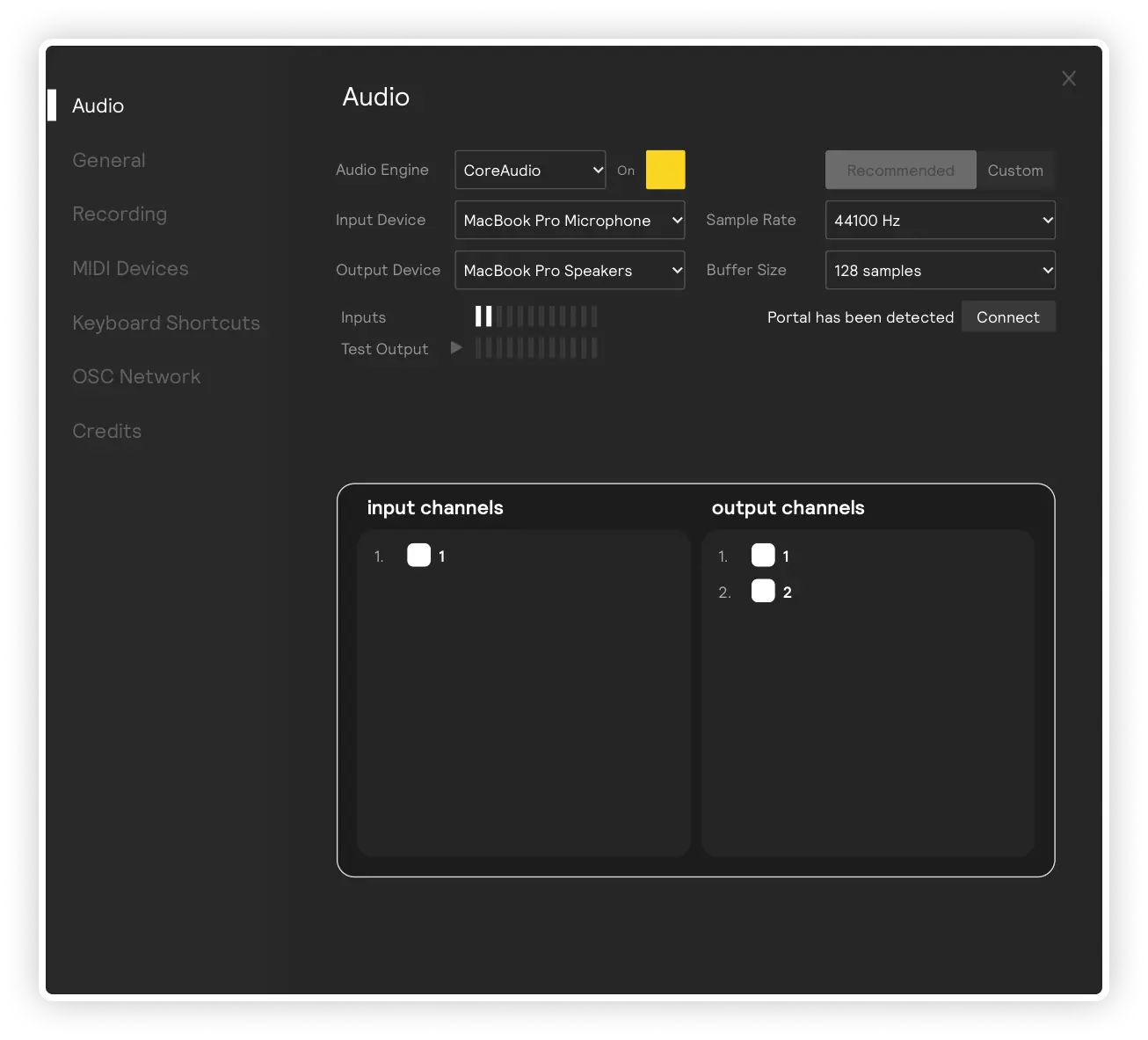
General Settings
This page allows you to view the email your Sunhouse account is registered to and sign in/out of this account.
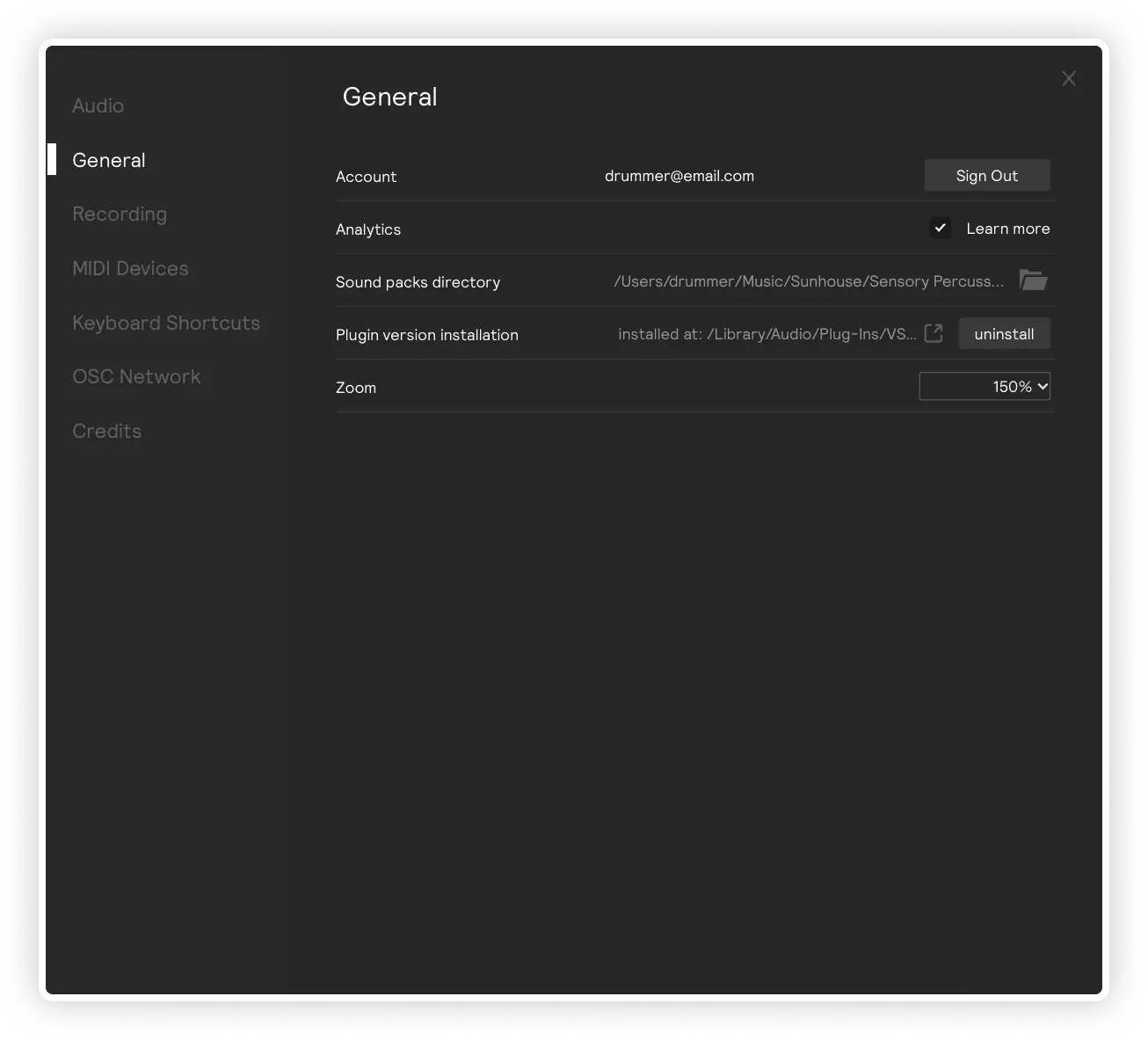
Account settings
See which email address your Sunhouse account is registered to and sign in/out of this account.
Analytics settings
You can also opt in/out of our anonymous analytics collections. This data helps us improve the Sensory Percussion software and make it more stable. We don't collect any personal information, just data about how the software is being used that can't be traced to any individual user. Read more about our data collection practices here.
Sound packs directory
Choose which folder Sunhouse sound packs are stored in. This is useful if you have a custom folder structure for your sound packs or want to store them on an external drive.
Plugin installation
Manage the installation of the Sensory Percussion 2 VST plugin here. If you're having trouble with the plugin, you can try reinstalling it from this page.
Zoom
You can adjust the zoom level of the Sensory Percussion app window here. This is useful if you're using a high-resolution display and the app is too small to see comfortably. You can scale from 50% to 200%.
Recording Settings
These settings allow you to configure the recording options for your session. You can choose the recording format (WAV, AIFF, or FLAC), the sample rate, and the bit depth. You can also choose the folder where your recordings are saved.
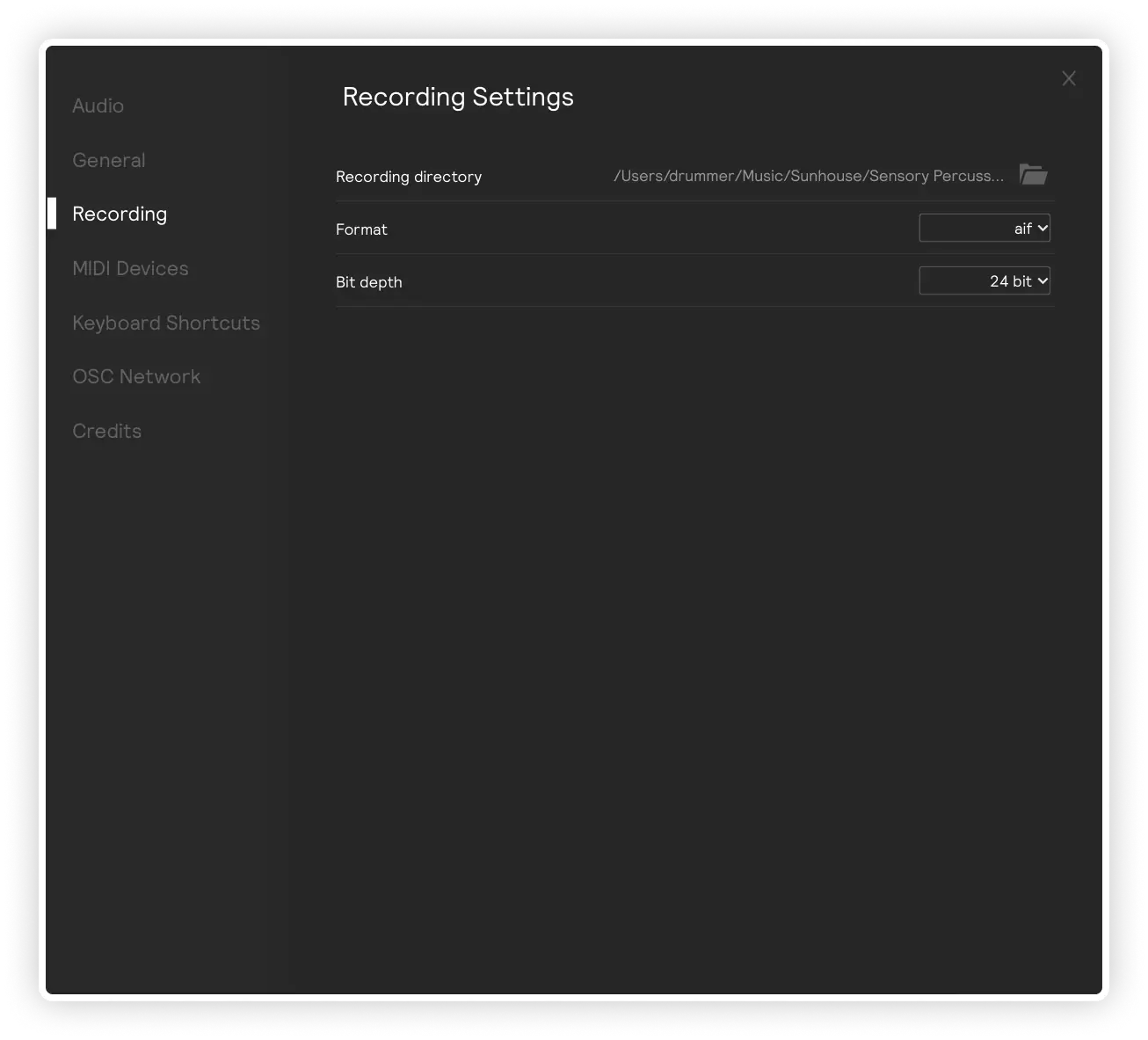
MIDI Devices
On this page, you can view and activate/deactivate MIDI inputs and outputs. If you're using an interface that has MIDI in/out, it will appear in these dropdowns, as well as any virtual MIDI ports that are active on your computer. For more information on using MIDI with Sensory Percussion, check out out our how-to articles on receiving MIDI in and sending MIDI out.
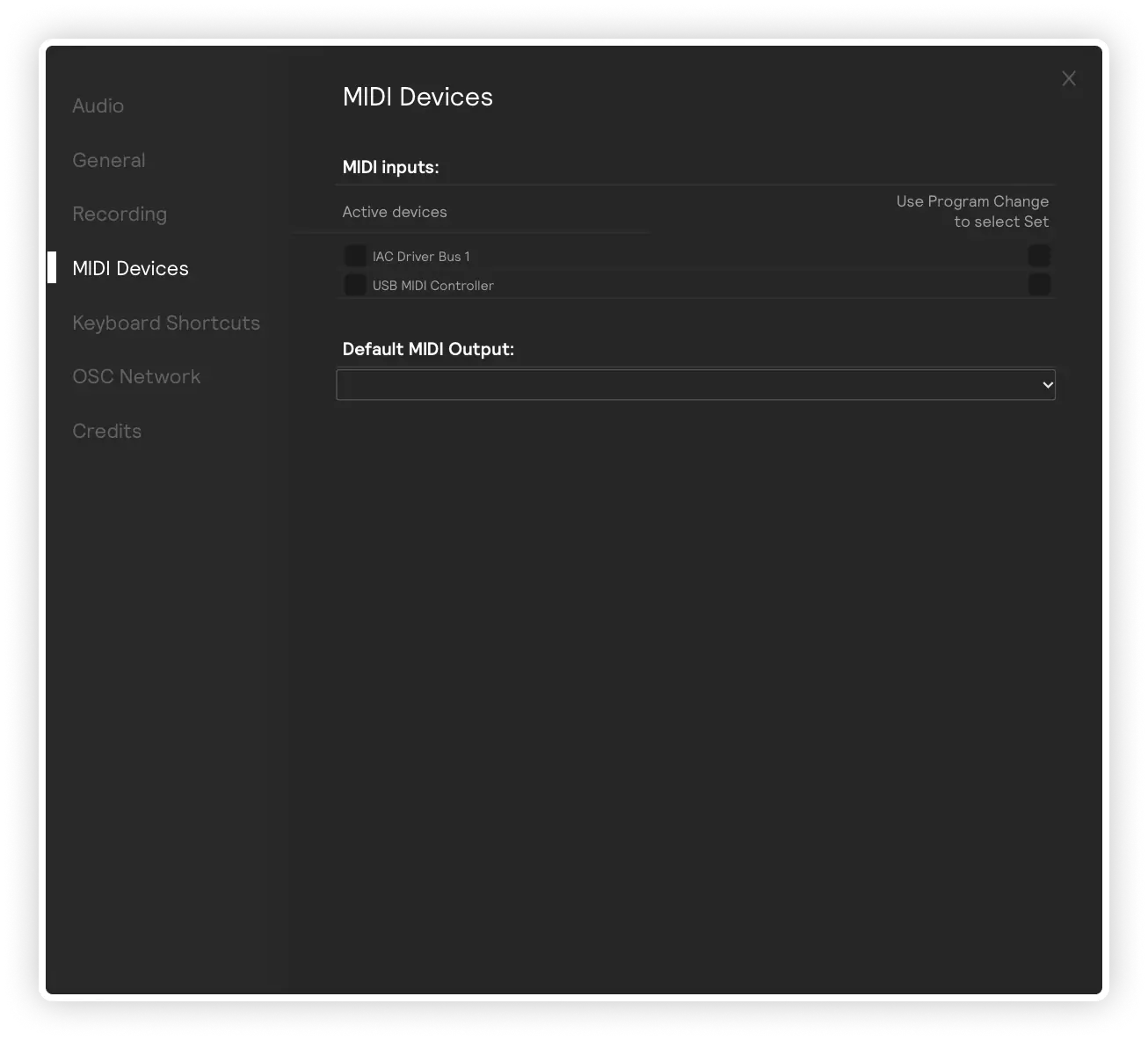
Keyboard Shortcuts
On this page, you can view and edit all keyboard shortcuts for the Sensory Percussion app. Click on any of the existing default shortcuts to change/remove them. You can also add shortcuts that don't exist by default.
